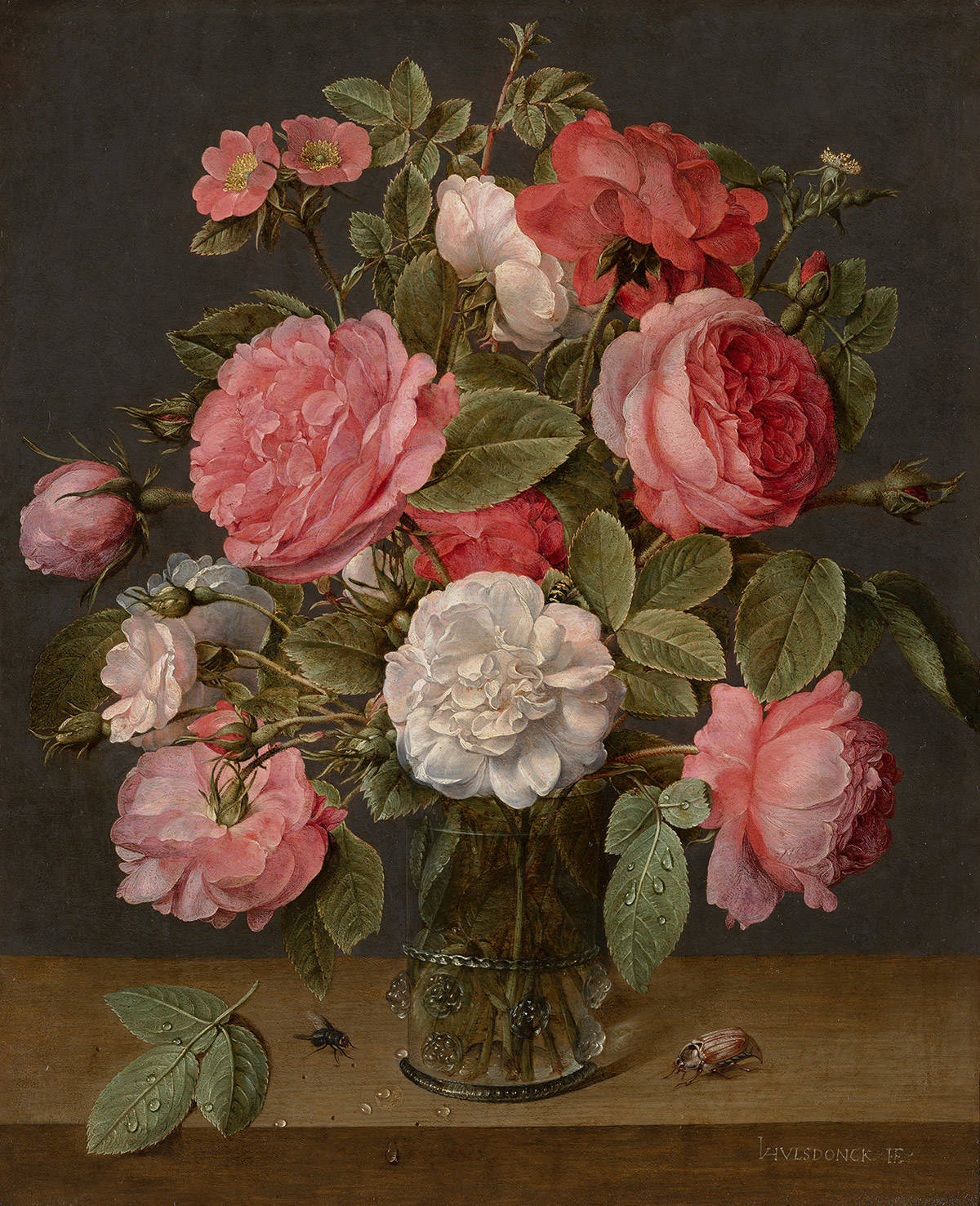Jacob van Hulsdonck (1582 – 1647)
Jacob van Hulsdonck was born in Antwerp in 1582, but grew up in Middelburg, where he learned his trade. While in Middelburg, then a centre for botanists, he came into contact with still life specialists Ambrosius Bosschaert the Elder and Jan Breughel the Elder. He may even have been apprenticed to Bosschaert. In 1608 he became a master of the Guild of Saint Luke in Antwerp. He married twice and had eight children, among whom Gillis Van Hulsdonck (1625-1669), who learned still life painting from his father.
Van Hulsdonck concentrated on still life paintings of fruit. He also painted still life flowers and food tables. In the course of his career Van Hulsdonck developed into an innovator in the genre of flower still life painting. He produced highly convincing and balanced depictions, rich in texture and three-dimensionality. The overlaps between the flowers and the transitions from light to shade in Roses in a Glass Vase are in many ways reminiscent of the flower still lifes of the eighteenth century.
Flowers in the Mauritshuis
The genre of flower still life painting is well represented in the collection of the Mauritshuis. The museum is one of only a few in the world to house an overview of the genre's development from the sixteenth to the eighteenth centuries. This area of the collection has been prioritised in the last two years. It is, therefore, no coincidence that the two most recent acquisitions were flower still lifes: Narcissi, Periwinkle and Violets in a Ewer, c. 1562 by Ludger tom Ring II and Vase of Flowers in a Stone Niche (1615) by Roelant Savery.
In May of this year a temporary exhibition of the collection's most beautiful flower still life paintings was installed in one of
the museum's small galleries. Included in the exhibition is Jacob van Hulsdonck's Roses in a Glass Vase. The selection,
entitled Nature's Most Beautiful, can be seen until Sunday 28 August in Gallery 13 in the Mauritshuis.


